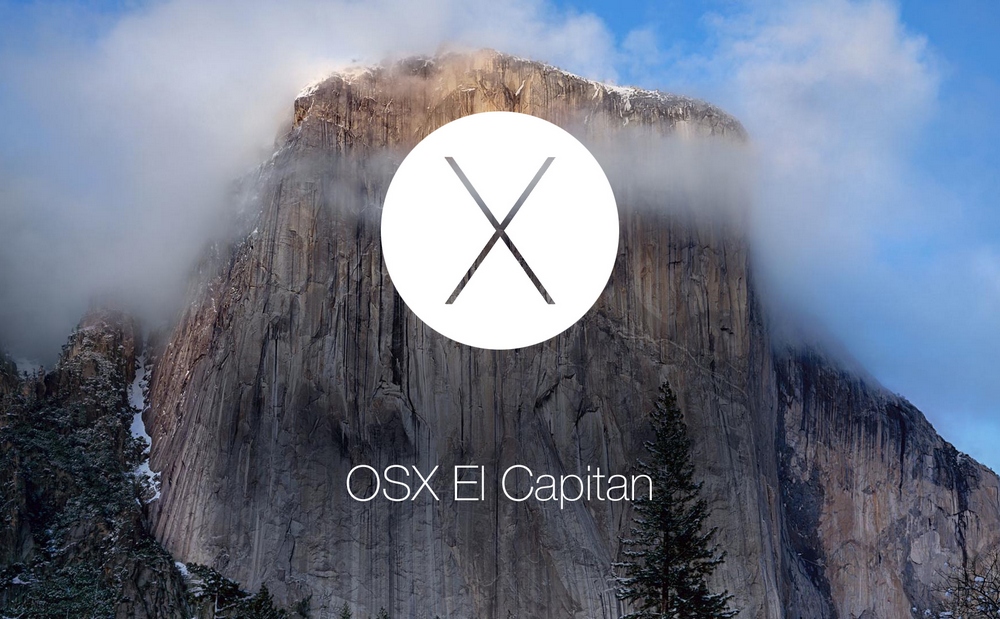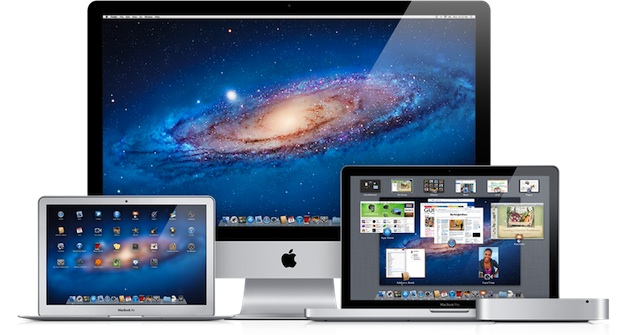How To Install Mac OS X El Capitan 10.11.6 Using USB In PC/Laptop?.First You Need Mac OS X ImageDownload From: http://extra.to/torrent. Download OS X El Capitan. For the strongest security and latest features, find out whether you can upgrade to macOS Catalina, the latest version of macOS. If you still need OS X El Capitan, use this link: Download OS X El Capitan. A file named InstallMacOSX.dmg will download to your Mac. Install the macOS installer. El Capitan 10.11.6 is now released as the latest version of Download El Capitan. For OS X El Capitan users this update is recommended. The upgrade to OS X El Capitan v10.11.6 enhances your Mac's reliability, performance and protection and is advised for all users. Solves a problem that can prevent parental control accounts from saving settings. OS X El Capitan Installer. Official OS X El Capitan Installer from the Mac App Store. Un-archive the zip archive and you will get the app Installer. A bootable ISO or bootable USB can be made from this installer. Instructions on how to do that are on the Internet/Youtube.
- Os X 10.11 Installer
- Os X 10.11 El Capitan
- Os X El Capitan Installer Not Working
- Mac Os X 10.11 Installer.iso
- Os X El Capitan Installer App Download
- Mac Os X 10.11 Download
- Os X 10.11 Installer Download
One of Wacom’s guiding principles is loving and inspiring our customers. Our customers are creating the art, movies, games, and other works of imagination that fill our lives with inspiration and enjoyment. Wacom is committed to making products that help put creativity into action.
Os X 10.11 Installer
Wacom does not recommend upgrading to OS 10.11 (“El Capitan”) if using a Cintiq 27QHD or Cintiq 27QHD Touch until an updated driver is released. Wacom expects the driver to be available within one week of Apple’s release of OS 10.11
Wacom continually monitors the compatibility of our products with current operating systems. We have discovered that the Cintiq 27QHD (DTK2700) and the Cintiq 27QHD touch (DTH2700) will not function correctly on the upcoming Apple Mac OS (OS 10.11 El Capitan). Due to a change in the way Apple handles drivers that communicate with the Cintiq27 QHD scalar, an upgrade to OS 10.11 will cause you to lose the ability to use the Wacom Display Settings software to adjust brightness and contrast, or to adjust color profiles. You will also lose the ability to use the Wacom Color Manager software for color calibration of your Cintiq 27QHD.
When available the updated driver can be downloaded from this site.
Os X 10.11 El Capitan
We apologize for any inconvenience and appreciate your patience and support.
Note that this issue only affects the Cintiq 27QHD and Cintiq QHD Touch on Mac OS 10.11. Other Cintiqs not affected. Windows operating system is not affected.
Why does the Cintiq 27QHD or Cintiq 27 QHD Touch Not Work with Mac OS 10.11 (El Capitan)?
The Cintiq 27QHD and Cintiq 27QHD Touch uses a sophisticated scalar for color management and other display settings. A special chip is used to communicate with the scalar which requires a driver. Apple’s OS contains a native driver but this does not have all the functions required to communicate with the scalar. As a result, the chip manufacturer provides a custom driver that replaces the stock Apple driver. With the release of Mac OS 10.11 Apple now prevents replacing the stock, driver and therefore communication to the scalar does not function.
Os X El Capitan Installer Not Working

Why do other Cintiqs not have this problem?
Only the Cintiq 27QHD and Cintiq 27QHD have the sophisticated scalar for advanced hardware color management.
What are the symptoms?

If you upgrade or install the Mac OS 10.11 the following will occur:
- When trying to use Wacom Display Settings to adjust brightness, contrast or color options, a warning will appear asking you to restart your computer in order to load a driver. A reboot will not load the driver.
- When trying to use Wacom Color Manager to color calibrate your Cintiq 27QHD, the software will be unable to establish connection with your display. Pressing “Retry” will not establish the connection.
What workarounds exist for this issue?
There are no simple workarounds at this time.

Advanced users may consider the following. The Cintiq 27QHD and Cintiq 27QHD Touch maintain their settings in hardware, enabling you to change settings in one environment but use the Cintiq in another.
Since the communication issue is not present in older Mac OS versions, you might load Mac OS 10.11 into a separate partition and keep the older partition for running color calibration and/or changing display settings. Since these functions are only done periodically your ability to work in Mac OS 10.11 would be preserved.
A further option would be to change settings on the Cintiq using a Windows OS computer then to re-attach the computer to the Mac running OS 10.11 Neither of these options are ideal but they would work in an emergency to allow adjustments to the Cintiq’s display settings.
It was 2009 when Apple last released a new operating system on physical media. Things have proceeded remarkably smoothly since version 10.7 switched to download-only installers, but there are still good reasons to want an old, reliable USB stick. For instance, if you find yourself doing multiple installs, a USB drive may be faster than multiple downloads (especially if you use a USB 3.0 drive). Or maybe you need a recovery disk for older Macs that don't support the Internet Recovery feature. Whatever the reason, you're in luck, because it's not hard to make one.
Mac Os X 10.11 Installer.iso
As with last year, there are two ways to get it done. There's the super easy way with the graphical user interface and the only slightly less easy way that requires some light Terminal use. Here's what you need to get started.
Os X El Capitan Installer App Download
- A Mac that you have administrator access to, duh. We've created El Capitan USB stick from both Yosemite and El Capitan, but your experience with other versions may vary.
- An 8GB or larger USB flash drive or an 8GB or larger partition on some other kind of external drive. For newer Macs, use a USB 3.0 drive—it makes things significantly faster.
- The OS X 10.11 El Capitan installer from the Mac App Store in your Applications folder. The installer will delete itself when you install the operating system, but it can be re-downloaded if necessary.
- If you want a GUI, you need the latest version of Diskmaker X app. Version 5 is the one with official El Capitan support.
- Diskmaker X is free to download, but the creator accepts donations if you want to support his efforts.
Mac Os X 10.11 Download
The easy way
Once you've obtained all of the necessary materials, connect the USB drive to your Mac and run the Diskmaker X app. The app will offer to make installers for OS X 10.9, 10.10, and 10.11, and it should run on OS X versions all the way back to 10.7—support for 10.6 was dropped in the most recent release.
AdvertisementDiskmaker X has actually been around since the days of OS X 10.7 (it was previously known as Lion Diskmaker), and it's still the easiest GUI-based way to go without intimidating newbies. If you're comfortable with the command line, it's still possible to create a disk manually using a Terminal command, which we'll cover momentarily.
Select OS X 10.11 in Diskmaker X, and the app should automatically find the copy you've downloaded to your Applications folder. It will then ask you where you want to copy the files—click 'An 8GB USB thumb drive' if you have a single drive to use or 'Another kind of disk' to use a partition on a larger drive or some other kind of external drive. Choose your disk (or partition) from the list that appears, verify that you'd like to have the disk (or partition) erased, and then wait for the files to copy over. The process is outlined in screenshots above.
The only slightly less-easy way
Os X 10.11 Installer Download
If you don't want to use Diskmaker X, Apple has actually included a terminal command that can create an install disk for you. Assuming that you have the OS X El Capitan installer in your Applications folder and you have a Mac OS X Extended (Journaled)-formatted USB drive named 'Untitled' mounted on the system, you can create an El Capitan install drive by typing the following command into the Terminal.
sudo /Applications/Install OS X El Capitan.app/Contents/Resources/createinstallmedia --volume /Volumes/Untitled --applicationpath /Applications/Install OS X El Capitan.app --nointeraction
The command will erase the disk and copy the install files over. Give it some time, and your volume will soon be loaded up with not just the OS X installer but also an external recovery partition that may come in handy if your hard drive dies and you're away from an Internet connection.
Whichever method you use, you should be able to boot from your new USB drive either by changing the default Startup Disk in System Preferences or by holding down the Option key at boot and selecting the drive. Once booted, you'll be able to install or upgrade El Capitan as you normally would.